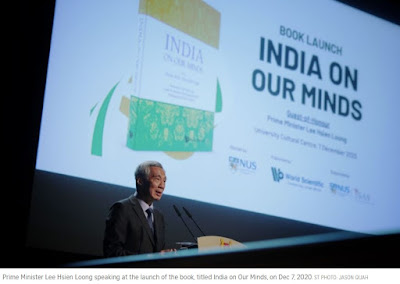US–China economic competition rests on intellectual property
29 June 2022Authors: Hannah Elyse Sworn and Manoj Harjani, NTU
Intellectual property (IP) has long been a sore point in relations between Washington and Beijing. US officials have repeatedly targeted China for widespread counterfeiting since its economic ‘opening up’ in the late 1970s. But after enduring a punishing series of legal reforms to join the World Trade Organization in 2001, the Chinese government is still under fire for weak enforcement, forced technology transfers and state-sponsored IP theft. Now China’s growing ability to produce IP indigenously is driving the evolution of US–China economic relations.
In 2021, China was the world’s top patent filer for the third year in a row. Chinese firms have filed approximately 75 per cent of global artificial intelligence patents in the past decade and 40 per cent of all 6G patents, while the United States accounted for only 35 per cent of the latter. The country’s ability to produce IP across a number of critical and emerging technologies has been framed as evidence that China is surpassing the United States in knowledge production.
While the significant growth in China’s patent filings point to genuine improvement in its ability to innovate, focussing on the number of filings is misleading. China’s production of more IP does not automatically translate into a strategic advantage in economic competition with the United States. Rather, it is high-quality IP that has assumed a critical role amidst globalisation and the emergence of global value chains, providing exclusive rights to license processes, brands and technologies essential for manufacturing.
Value chains are hierarchical. At the apex, owners of high-quality IP dictate the terms of — and reap a greater proportion of profits from — economic activity taking place lower down in the value chain where the IP is paid for and used in assembly. ‘Moving up’ the value chain enables firms to capture a higher share of value added, giving countries a strategic advantage in dictating the terms of international trade.
IP has become integral to economic power. The United States’ near-monopoly over high-quality IP ownership has allowed its firms to capture a disproportionate share of value added globally. US efforts to produce, regulate and protect IP can be framed as seeking to protect its power to shape the global economy.
China’s leadership has doggedly pursued its own innovation pathway to maintain economic growth and avoid the middle-income trap by moving up the value chain. But regardless of Beijing’s intentions, this threatens US economic power conferred to it through greater IP ownership.
Although China’s leadership is well aware of the importance of IP quality over quantity, success in capturing value added has evaded China’s grasp. China’s IP receipts of US$8.6 billion in 2020 do not come close to the United States’ enormous US$113.8 billion. This is likely due to China’s IP tending more toward adaptive innovation — over half its domestic filings are utility patents. These have lower eligibility requirements, protection periods and retention rates, indicating lower IP quality.
Moreover, in 2020, only 8 per cent of China’s patents were granted abroad compared to 29 per cent of the United States’. Overseas patents are crucial for protecting a country’s IP across global value chains. Only 10 per cent of global gold-standard ‘triadic’ patents — a set of patents that are registered with EU, Japanese and US patent offices to protect the same invention — were filed by China in 2019, while the United States accounted for 22 per cent. Even globally-recognised Chinese companies like Huawei, which has successfully developed extensive IP portfolios in emerging sectors such as 5G, are outliers in a corporate environment lacking high-quality IP filings.
China’s innovation trajectory differs from previous rising powers, which have historically leveraged a more balanced alliance between the public and private sector to develop IP. Although the private sector is the biggest contributor of research and development (R&D) spending in China, this statistic is complicated by the fact that state-owned enterprises dominate China’s corporate landscape, accounting for almost half of total R&D spending in 2020.
China’s R&D spending has grown at a significantly faster rate than the United States since 2000. Yet its declining total factor productivity reflects the high level of state investment in inefficient firms. This has racked up debt and stunted the return on investments, with China’s top-down approach to identifying key technologies running a considerable risk of making the wrong bets.
Government rhetoric touting market reforms and innovation has been contradicted by backtracking on prior relaxation of market controls towards greater state guidance under Chinese President Xi Jinping. Regulatory crackdowns on Chinese internet giants caused US$1.5 trillion worth of losses in the tech sector and has created a chilling effect on the ability of these companies to attract talent.
Meanwhile, top firms in state-defined ‘core’ technologies — including semiconductors, telecommunications and quantum computers — have gone untouched. Favoured companies such as Huawei and ZTE are seen as integral to national security and self-sufficiency despite many being inefficient and debt-laden.
On first look, Beijing’s state-heavy attempts at expanding IP ownership suggests that China is gaining the upper hand in economic competition with Washington. But the poor quality of China’s IP holdings and its underlying productivity slowdown reveal the weakness of this approach.
Until China resolves the limitations of its top-down innovation policies, nascent US industrial policy could well see the United States preserve its dominance over high-quality IP into the future.
Hannah Elyse Sworn is a Senior Analyst at the S. Rajaratnam School of International Studies, Nanyang Technological University, Singapore.
Manoj Harjani is a Research Fellow with the Future Issues & Technology research cluster at the S. Rajaratnam School of International Studies, Nanyang Technological University, Singapore.


